Abstract
Mucoepidermoid carcinoma of the bile duct is an extremely rare tumor. Seventeen cases originating from intrahepatic bile duct and 2 cases from common hepatic duct have been reported in the English literature. Mucoepidermoid carcinoma arising from the common bile duct has not been previously reported. A 68 year-old man was admitted due to obstructive jaundice. Computed tomography showed a malignant tumor of the common bile duct located in the intrapancreatic segment. Filling defects of the distal common bile duct was seen on endoscopic retrograde cholangiogram. Under the impression of bile duct cancer, pylorus-preserving pancreatoduodenectomy was performed. Histologic diagnosis of the resected specimen was mucoepidermoid carcinoma of the common bile duct. After surgery, the patient received concurrent chemoradiotherapy, and planned to receive additional chemotherapy. We herein report on a first case of primary mucoepidermoid carcinoma of the common bile duct, and review the literature.
Go to : 
References
1. Auclair PL, Goode RK, Ellis GL. Mucoepidermoid carcinoma of in-traoral salivary glands. Evaluation and application of grading criteria in 143 cases. Cancer. 1992; 69:2021–2030.

2. Arakawa Y, Shimada M, Ikegami T, et al. Mucoepidermoid carcinoma of the liver: report of a rare case and review of the literature. Hepatol Res. 2008; 38:736–742.

3. Koo J, Ho J, Wong J, Ong GB. Mucoepidermoid carcinoma of the bile duct. Ann Surg. 1982; 196:140–148.

5. Khan SA, Thomas HC, Davidson BR, Taylor-Robinson SD. Cholangiocarcinoma. Lancet. 2005; 366:1303–1314.

6. Nakajima T, Kondo Y, Miyazaki M, Okui K. A histopathologic study of 102 cases of intrahepatic cholangiocarcinoma: histologic classification and modes of spreading. Hum Pathol. 1988; 19:1228–1234.

8. Rullier A, Le Bail B, Fawaz R, Blanc JF, Saric J, Bioulac-Sage P. Cytokeratin 7 and 20 expression in cholangiocarcinomas varies along the biliary tract but still differs from that in colorectal carcinoma metastasis. Am J Surg Pathol. 2000; 24:870–876.

9. Klussmann JP, Gültekin E, Weissenborn SJ, et al. Expression of p16 protein identifies a distinct entity of tonsillar carcinomas associated with human papillomavirus. Am J Pathol. 2003; 162:747–753.

10. Pellegrini G, Dellambra E, Golisano O, et al. p63 identifies keratinocyte stem cells. Proc Natl Acad Sci U S A. 2001; 98:3156–3161.

11. Stewart FW, Foote FW, Becker WF. Mucoepidermoid tumors of salivary glands. Ann Surg. 1945; 122:820–844.

12. Bae KB, Kim TH, Choi YK, Paik NW. Surgical treatment and prognosis for 268 patients with biliary tract cancers. J Korean Surg Soc. 2000; 58:412–419.
13. Jang JY, Kim SW, Park DJ, et al. Actual long-term outcome of extrahepatic bile duct cancer after surgical resection. Ann Surg. 2005; 241:77–84.

14. Kopelson G, Harisiadis L, Tretter P, Chang CH. The role of radiation therapy in cancer of the extrahepatic biliary system: an analysis of thirteen patients and a review of the literature of the effectiveness of surgery, chemotherapy and radiotherapy. Int J Radiat Oncol Biol Phys. 1977; 2:883–894.

15. Kim WC, Lee DH, Lee KY, et al. The role of postoperative radiation therapy in extrahepatic bile duct cancers. J Korean Soc Ther Radiol Oncol. 2003; 21:118–124.
16. Kurosaki H, Karasawa K, Kaizu T, et al. Intraoperative radiotherapy for resectable extrahepatic bile duct cancer. Int J Radiat Oncol Biol Phys. 1999; 45:635–638.

17. Nelson JW, Ghafoori AP, Willett CG, et al. Concurrent chemoradiotherapy in resected extrahepatic cholangiocarcinoma. Int J Radiat Oncol Biol Phys. 2009; 73:148–153.

Go to : 
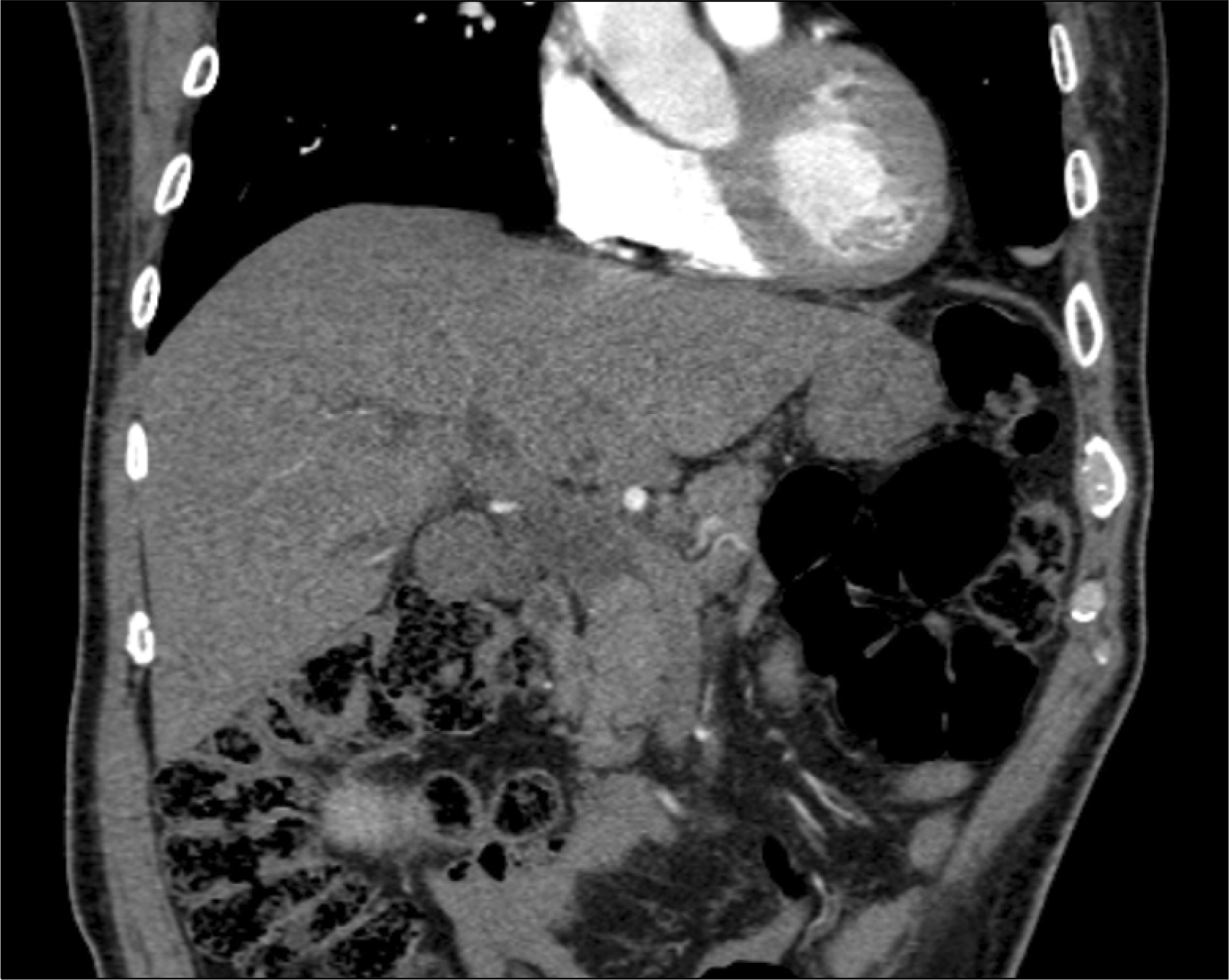 | Fig. 1.Abdominal CT findings. An intraluminal mass and bile duct dilatation were seen in the distal common bile duct. |
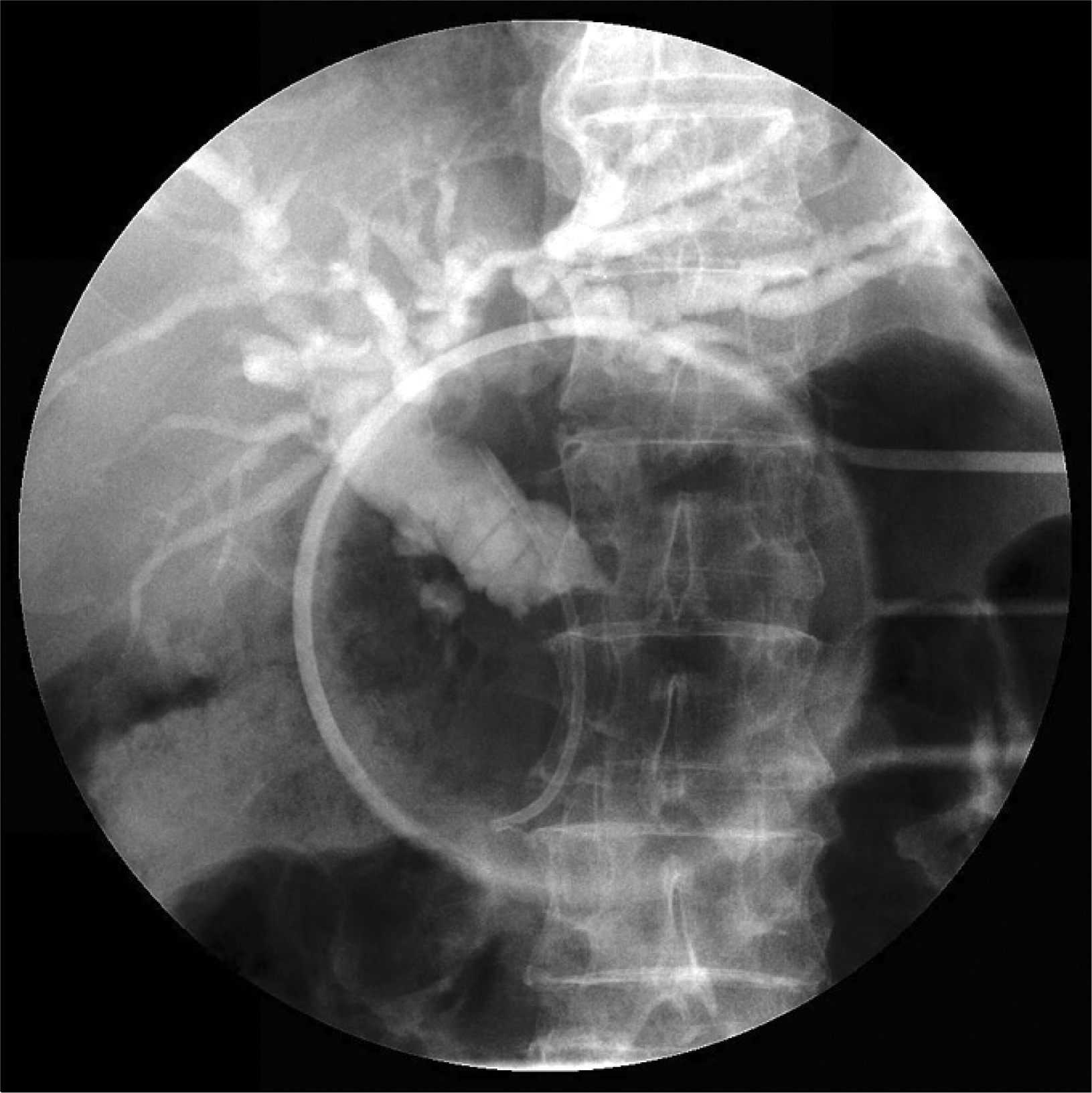 | Fig. 2.Endoscopic retrograde cholangiographic findings. A filling defect was seen at the level of the distal common bile duct with bile duct the dilatation, and plastic stent was inserted. |




 PDF
PDF ePub
ePub Citation
Citation Print
Print


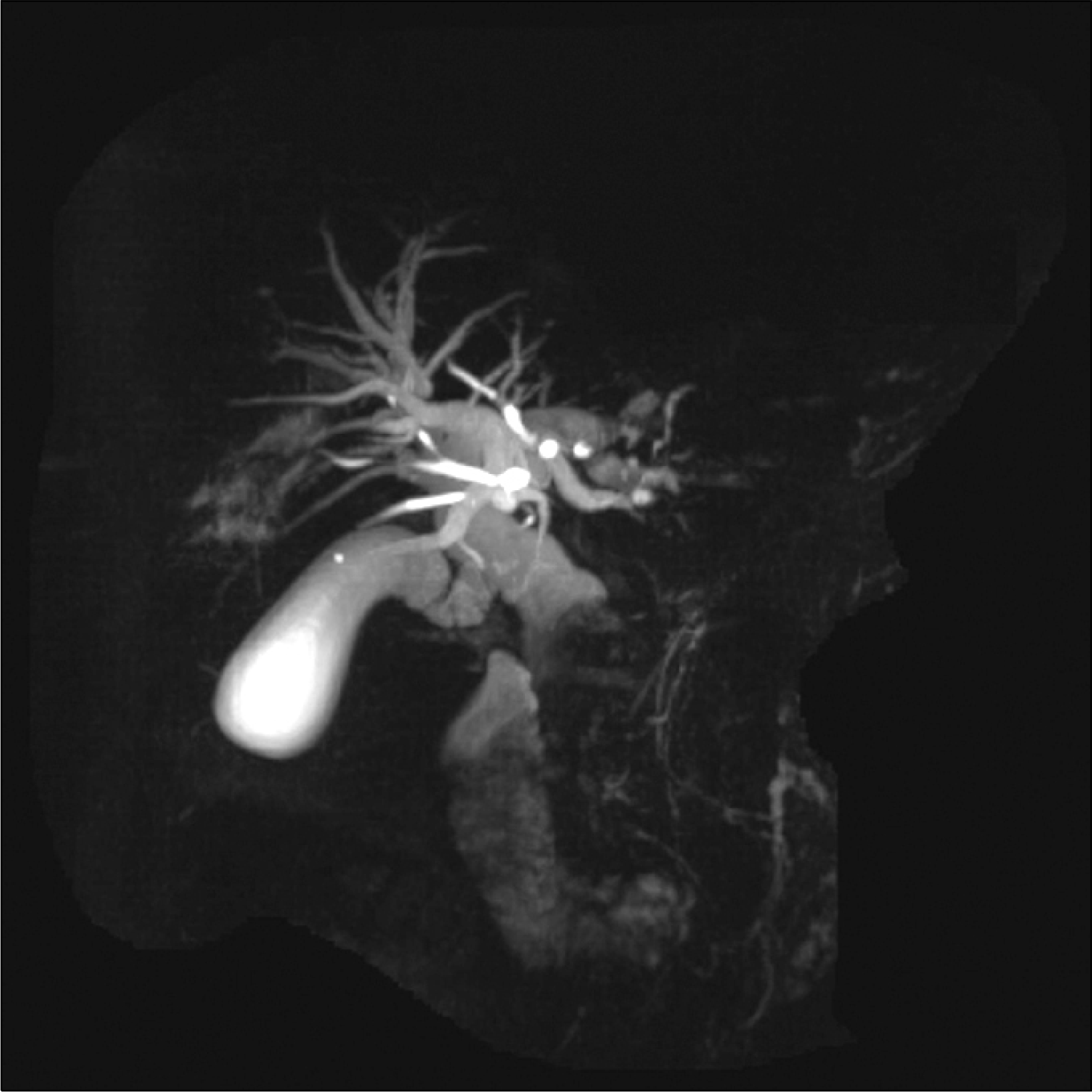
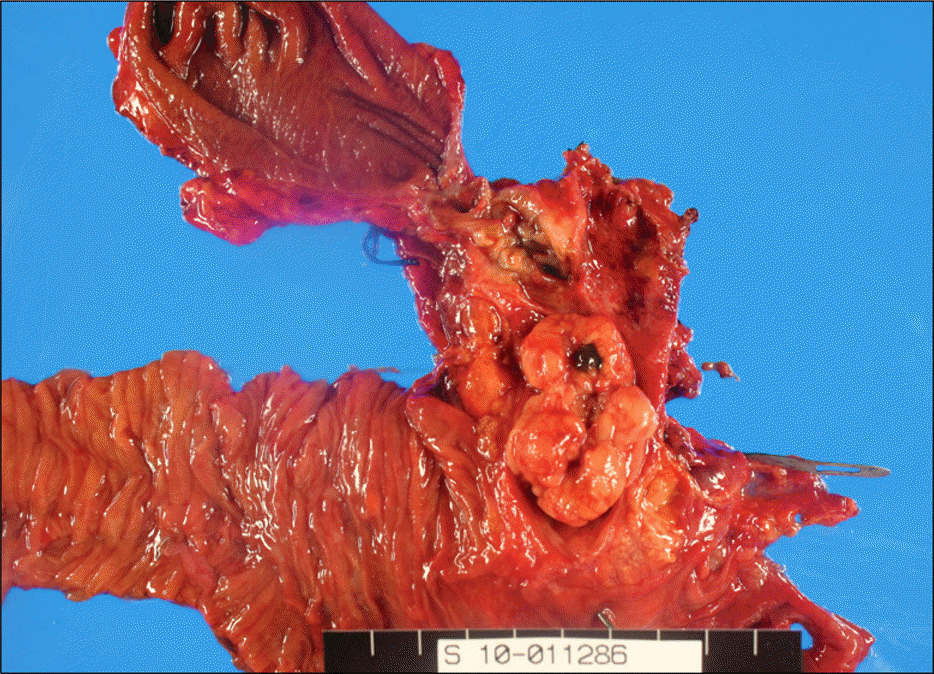
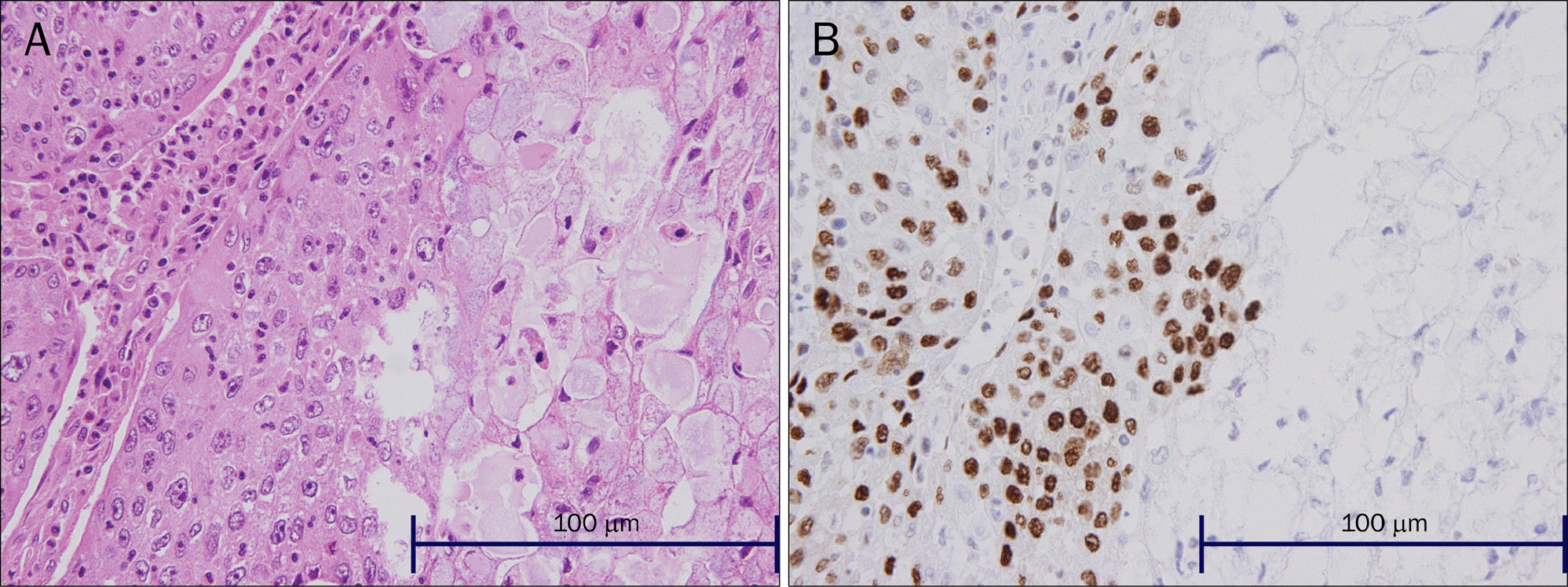
 XML Download
XML Download